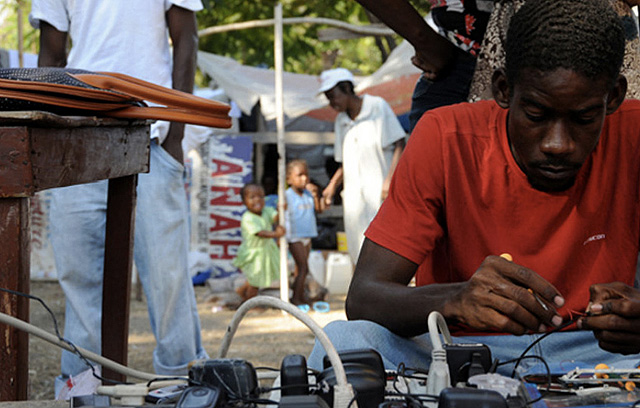PROJECT OVERVIEW
Although natural disasters are common, the humanitarian response to the earthquake Haiti was different this time: new media and communications technologies were used in unprecedented ways to aid the recovery effort. In the weeks after the crisis, Haiti quickly became a real world laboratory for several new applications, such as mapping and SMS texting platforms. Several Knight Foundation grantees were involved in these efforts: Ushahidi (a mapping software platform), Internews (a media development organization), Global Voices (a blogging platform), the Extraordinaires (a mobile micro-tasting platform) and the MIT Center for the Future of Civic Media.
This report examines the media and communications response to the devastating earthquake in Haiti in 2010, highlights what emerging practices showed promise and provides a series of lessons learned and recommendations for improving the effective utilization of media in disaster relief efforts.
REPORT CONTENTS
-
Media Innovations – The most notable innovations to emerge from Haiti were: the translation of crowdsourced data to actionable information; the use of SMS message broadcasting in a crisis; and crowdsourcing open maps for humanitarian application.
-
Radio Mattered the Most – New media did not preclude the importance of traditional media. Radio continued to be the most effective tool for serving the information needs of the local population. With Haiti’s newspapers and television broadcasters knocked out of production for the first few weeks after the quake, radio provided a heroic lifeline.
-
Progress, but not Success – The Haiti experience was not wholly a “new media success story”; some of the approaches – attempted for the first time – faltered. The crisis threw together volunteer technology communities and professional humanitarian organizations, without a common language and operating procedures. A lack of coordination and understanding of how to use and integrate new tools into existing disaster relief structures further complicated efforts on the ground.
-
Greater Coordination Needed – The report calls for greater cross-sector collaboration to bridge the gaps between humanitarian and media communities to improve future recovery efforts. Specifically, it recommends that media and new technology developers and humanitarian agencies (both UN and international NGOs) engage in joint preparation and simulation exercises to mainstream humanitarian media and new technologies for future emergency responses.
